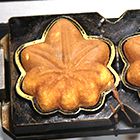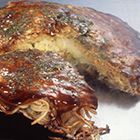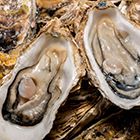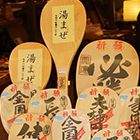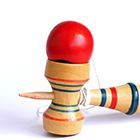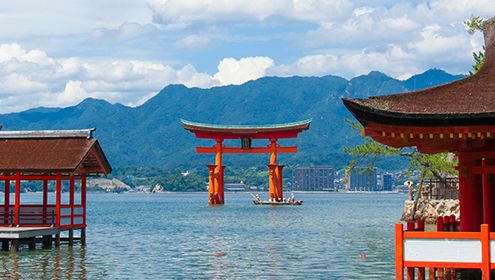
The shrine is known as true refined architectural beauty. The striking Heian period (794-1185) styled palatial design features a unique composition of layouts and the boldest choice of building location.
During high tide, the vermilion lacquered corridors of the shrine appear if they are almost floating upon the surface of the water. The concept envisioned by Taira Nokiyomori brings together the backdrop of Mount Misen and the Seto Inland Sea with their interwinding colors to present a scenery that boasts an unprecedented beauty like no other.
If you take the ferry from Miyajimaguchi port to over to Miyajima Sanbashi, Miyajima Island's famous resident deer will be there to greet you. The path leading towards Itsukushima Shrine is laden with souvenir shops for tourists enjoyment, with the famous momiji manju and rice paddles on sale.
From JR Miyajimaguchi Station or Hiroshima Electric Railway Miyajima Station, travel for 10 minutes by ferry over to Miyajima Sanbashi. Please note, during winter months last entry into the shrine is at 17:00.
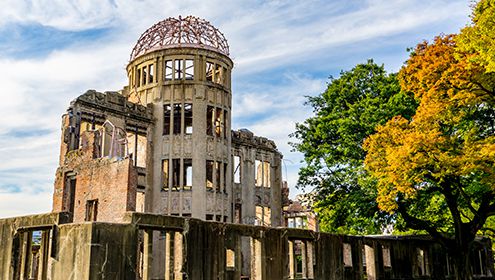
A once-famous place in Hiroshima loved by its people. However, on the morning of August 6th, 1945 Hiroshima's city was flattened in an instant as a result of an atomic bomb being dropped.
The Atomic Bomb Dome is a registered UNESCO World Cultural Heritage Site that serves as a strong reminder to not allow such a tragedy to ever be repeated, and as an expression of hope for world peace. The site's dark origins have also lead it to be called a "Legacy of Tragedy".
Exit Hiroshima Station via Minami Guchi exit, transfer to the No. 2 tram headed to Miyajimaguchi or No. 2 headed to Nishi Hiroshimaeki or No. 6 tram headed to Eba and get off at Genbaku Dome-mae stop (Atomic Bomb Dome).
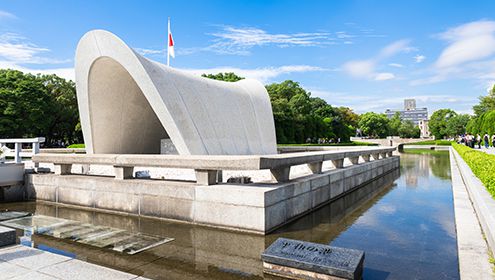
The museum features exhibits of photos, records, and mementos of victims that have been gathered to help illustrate the damage and suffering Hiroshima and its people experienced as a result of the atomic bombing during World War Two. The museum promotes the movement towards a peaceful nuclear-weapon-free world, without forgetting the horrific atomic bomb’s past.
Transfer from JR Hiroshima Station to the Hiroshima town bus headed for Yoshijima. Get off at Heiwa kinen koen stop, walk 1 minute.
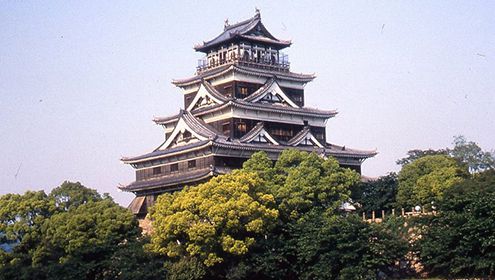
Hiroshima Castle was originally built in 1589 by Mori Terumoto. After the castle tower suffered severe damage in the atomic bombing, the exterior underwent restoration in 1958. 400 years following its fortification, in 1989 the castle was remodeled and currently operates as a historical archive for Buke culture records. Situated close to the city center, the local people often visit the area to relax and refresh.
A 15-minute walk from Kamiyacho Station on the inner-city tram line.
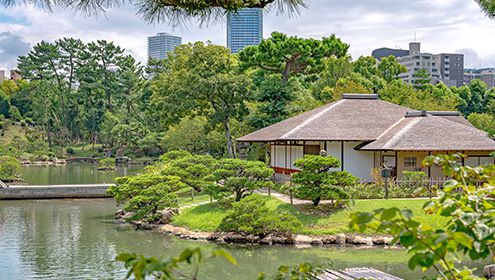
Nestled in the heart of the city enclosed by contrasting greenery, hides away the tranquil Shukkeien Garden. The Daimyo of Hiroshima, Asano created the garden in 1620 as an addition to his villa.
The garden is only a short walk from Hiroshima Station, so if you have the time it’s worth stopping by for a visit.
A 10-minute walk from Hiroshima Station, or from the city center Hatchobori a 10-minute walk.
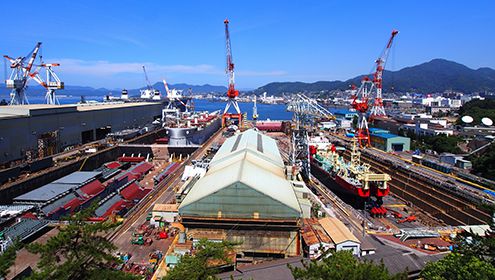
The 3rd biggest city in Hiroshima. Plenty of attractions like the Yamato Museum, JMSDF Kure Museum and more! Recommended for family vacations as the sightseeing locations are enjoyable for children and adults alike.
Seasonal Recommend
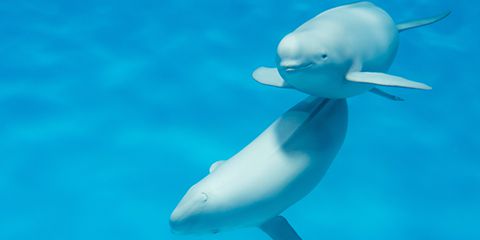
Miyajima Marine Package CourseEasy access to MIyajima with aquarium ticket.
Departure in front of Prince hotel at Hiroshima port.
Hiroshima⇔Miyajima
Special set plan ★Regular high speed ship + Miyaji Marine(Aquarium)★
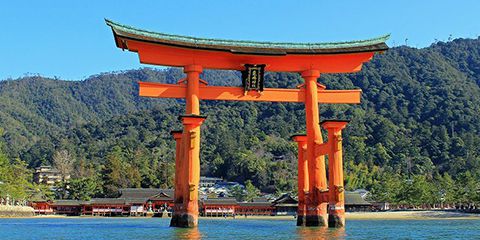
Hiroshima and Miyajima 1 Day Bus Tour・2 World heritage sites on Hiroshima and Miyajima.
・You can select 3 departure location from Kyoto / Osaka / Hiroshima
・On board Multilingual Audio System
・English speaking tour guide will join the tour
・Shinkansen(Bullet Train) Included
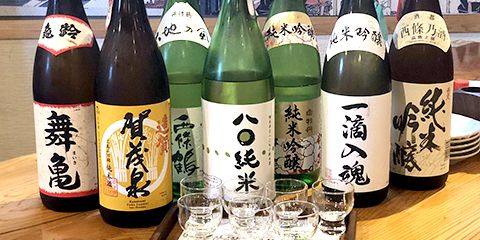
A Machi NOMI tour packageAn affordable Machi NOMI package plan where bar hopping at places the locals visit everyday and the comparison-drinking of Japanese sake have become a set at the [sake-capital Saijo, home of Ginjo sake].
The sake capital of Saijo that still continues to manufacture Ginjo sake that is of the highest quality even among Japanese sake. At the nationwide pre-eminent brewery village where 7 different Sake distilleries gather near the Station, you will be able to enjoy a variety-rich, good-old fashioned town-scape. Such as in the Sakagura-dori located in the east side of the station where distilleries are designed like a modern-day brewing company with a retro western-style office at the front and red chimneys used in place of billboards, and mud-built Sake storage houses boasting a beautiful contrast of white plaster and black Namako walls. There are even village-houses that are the vestiges of the Senbonkoshi (thousand lattices) style! After a quick walk through town, you will be able to enjoy drinking and comparing the alcohols of 7 different breweries as well as a small dish at a popular Izakaya bar of Saijo. At the second and third bars, you will be invited to Izayaka bars that are not in any guidebooks and are loved and visited daily by the locals. This is a deep and unique excursion where you will be able to experience the day-to-day of the Japanese after their work.
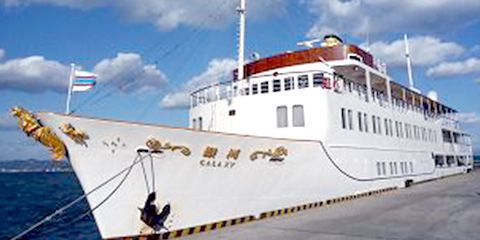
Hiroshima Bay Cruise | Galaxy | Lunch CruiseThe islands of Seto change with the seasons along with the ever changing face of the sea. Enjoy the meal that has become the pride of the Galaxy chefs, as we make our way to Miyajima the home of Itsukushima shrine.
About Hiroshima
Hiroshima may be known for is past involving the nuclear bombing, but out on the calm sea, lays the mystical Itsukushima Shrine, an official registered World Heritage Site as of 1996. While Itsukushima Shrine may be one of the three famous views of Japan, Hiroshima styled okonomiyaki, the pristine and breathtaking views from a Seto Inland Sea cruise, and cycle tours continue to bring large numbers of tourists to this popular sightseeing destination.
